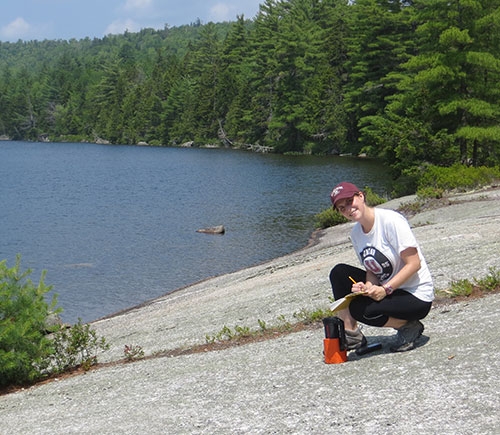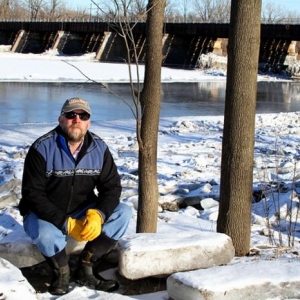John Garver, professor of geology (with Matt Manon, lecturer, Matt Worthington '15 and Olivia Thurston '16)
Hancock County, along the scenic mid-coast of Maine, is known for evergreen forests, emerald lakes and rolling blueberry fields. Less known, however, is that it is one of several areas in Maine that have a higher-than-average occurrence of lung cancer that may be linked to radioactive minerals.
Research by Prof. John Garver and his students is showing that the region’s iconic granite ledges may play a role by producing radon, the radioactive gas linked to lung cancer.
The Lucerne pluton is a 250-squaremile isosceles triangle of granite that points about 50 miles northeast from its base near Acadia National Park. The intrusion of igneous rock, named for the Swiss region that its landscape resembles, was formed about 375 million years ago.
Garver and his students have found high levels of uranium, particularly along cracks and fissures, which may facilitate the seepage of radon to groundwater and buildings. For some time scientists have noted elevated levels of radon in buildings and well water, Garver said. Maine was one of the first states to recognize that high radon levels are linked to some types of granite bedrock. This research is focused on understanding the exact source and path of the radon.
The researchers use a portable gamma spectrometer to measure radioactivity and understand the distribution of potassium, uranium, and thorium. Most of their measurements have been taken along highway rock cuts, mountain paths, and lake shorelines, where the granite is exposed.
In the lab, samples reveal uranium, thorium, arsenic and other trace elements. Using the National Science Foundation supported scanning electron microscope, they can understand the problem minerals that result in locally high levels of uranium and radon.
“Hazard mitigation can only be effective if you understand the science behind the problem,” Garver said. “We are trying to figure out the radioactivity of the rocks so the hazard can be better addressed in the future.”


